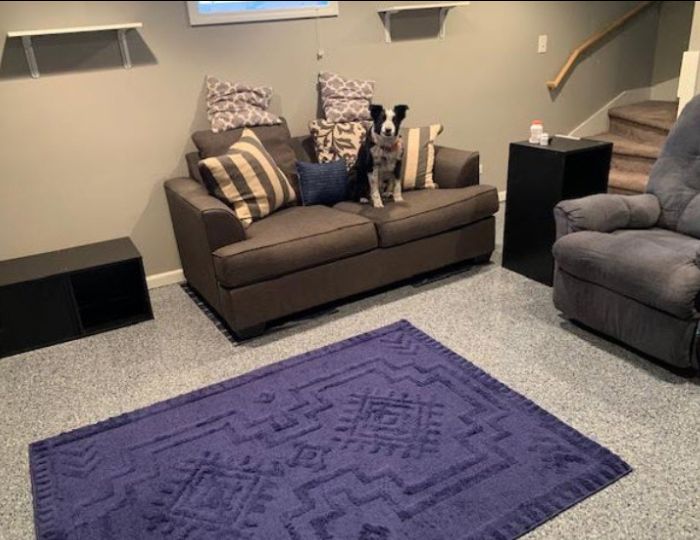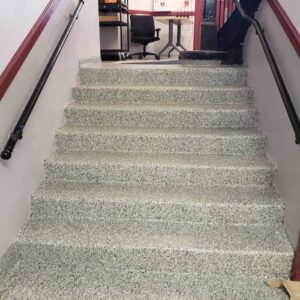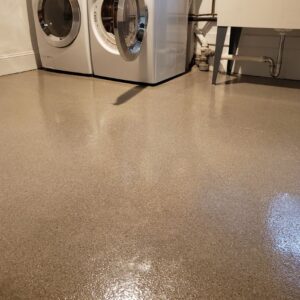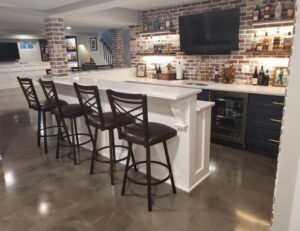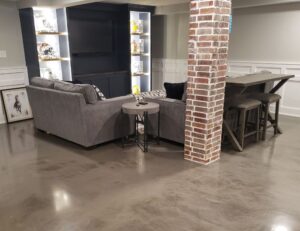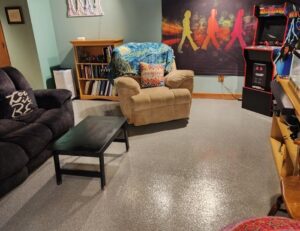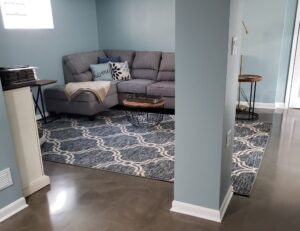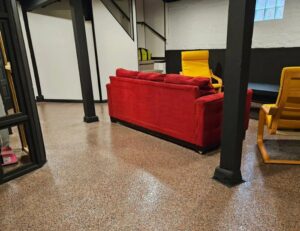Basement floors often get overlooked, but a fresh coat of paint can completely transform a dull, gray slab into a clean, functional, and even stylish surface. Whether you’re looking to upgrade your unfinished basement or add a polished touch to a fully finished space, painting the floor is a cost-effective solution. In this guide, we’ll break down how to paint a basement floor the right way, and why proper preparation and materials matter just as much as aesthetics.
Why Paint Your Basement Floor?
A painted basement floor does more than just improve appearance. Paint acts as a barrier against moisture, dust, and mildew—common issues in below-grade spaces. It also makes cleaning easier, adds light reflectivity, and can even increase the perceived value of your home. For utility rooms, storage areas, or entertainment zones, painting the floor can offer a clean, uniform look while enhancing durability and function.
While many homeowners are tempted to tackle the job themselves, it’s important to know the challenges and risks—especially when it comes to moisture levels, surface preparation, and product selection.
Step 1: Assess Moisture and Condition
Before anything else, you need to determine whether your basement floor is suitable for paint. Concrete is porous and can absorb water from the ground or through cracks. Painting over damp concrete without a proper vapor barrier or sealant can cause the paint to peel, bubble, or flake.
Here’s how to check for moisture:
-
Tape a small piece of plastic (around 2’x2’) to the floor and seal all edges.
-
Leave it for 24–48 hours.
-
If condensation appears under the plastic, your floor has too much moisture for painting at this time.
Also inspect for:
-
Large cracks
-
Uneven spots
-
Old sealers or adhesives
-
Mold or mildew
If you find significant issues, it’s wise to consult a professional like Broadleaf Inc. for proper remediation before moving forward.
Step 2: Prep the Surface
Proper prep is key to a long-lasting painted floor. Start by thoroughly cleaning the surface with a degreaser or trisodium phosphate (TSP) to remove grime, stains, and residue. Sweep and vacuum to eliminate dust.
Next, etch the surface (especially if it’s smooth) using a concrete etching solution. This opens up the pores and helps the paint adhere better. Rinse and let it dry completely.
If cracks are present, patch them with concrete filler or epoxy. Allow sufficient cure time per the product instructions. A clean, dry, and smooth surface is non-negotiable for a professional result.
Step 3: Choose the Right Paint
Don’t use regular wall or porch paint—it won’t hold up to foot traffic, moisture, and the unique environment of a basement. Instead, opt for one of the following:
-
Epoxy paint: The most durable option, epoxy creates a hard, stain-resistant surface that can withstand wear and moisture. Available in 1-part (easier DIY) and 2-part systems (more professional-grade).
-
Concrete floor paint: Specifically formulated to adhere to concrete, this type resists mildew and stains but may not be as tough as epoxy.
-
Polyurethane coatings: High-performance and highly durable, these are often used commercially but may require professional application.
When in doubt, Broadleaf Inc. can help you select the ideal system based on your basement’s needs and your long-term goals.
Step 4: Apply Paint or Coating
Once your surface is prepped and you’ve chosen the right product, it’s time to paint.
-
Prime (if needed): Some paints or coatings require a concrete primer to help with adhesion.
-
Cut in the edges: Use a brush to paint along walls and hard-to-reach areas.
-
Roll the paint: Use a long-handled roller to apply an even coat across the floor. Work in small sections and avoid painting yourself into a corner.
-
Second coat: Let the first coat dry thoroughly (typically 24 hours) before applying the second coat.
Pay close attention to temperature and humidity levels during and after application—these can significantly impact curing and performance.
Step 5: Cure and Maintain
After painting, give the floor ample time to cure. This may range from 3 to 7 days depending on the product. Avoid walking on the surface or moving furniture onto it during this time.
To maintain your new basement floor:
-
Sweep regularly to remove dust and debris
-
Mop with non-abrasive cleaners
-
Recoat when necessary to maintain finish and protection
With the right care, your painted basement floor can look fresh and vibrant for years to come.
Ready for a Flawless Basement Floor Finish?
Painting a basement floor might seem straightforward, but the prep work and product choice make all the difference between a beautiful, long-lasting finish and a disappointing result. If you want expert-grade results without the guesswork, Broadleaf Inc. is your trusted partner in basement flooring solutions. We specialize in high-performance coatings designed for durability, moisture resistance, and style—customized to your space.

